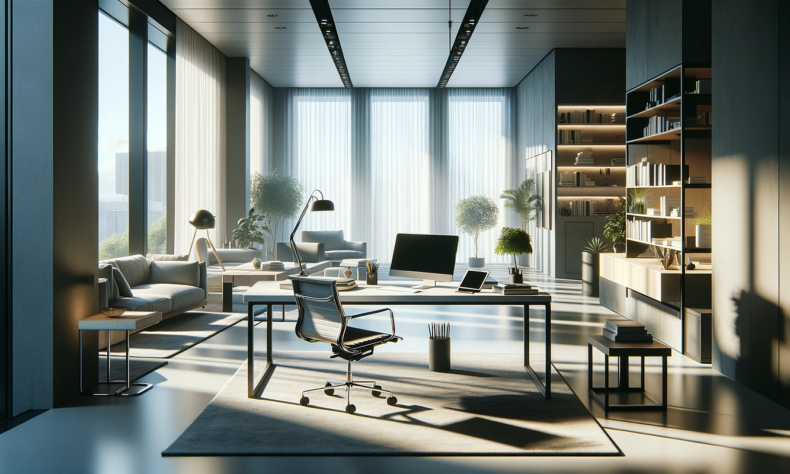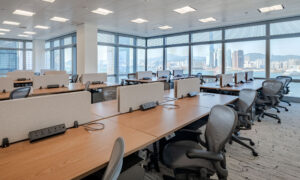
As the workplace evolves, so does the need for flexible and functional office spaces. Office partitioning systems have emerged as essential tools in creating adaptable work environments that cater to the diverse needs of modern businesses. In this blog, we’ll explore the various types of
office partitioning systems, their benefits, and how they can enhance productivity and collaboration.
Understanding Office Partitioning Systems
Office partitioning systems are structures used to divide larger office spaces into smaller, functional areas. These partitions can range from temporary dividers to permanent walls, offering a spectrum of solutions to meet different organizational needs. The design and material of the partitions can vary widely, allowing businesses to tailor their office layout according to their specific requirements.
Types of Office Partitioning Systems
- Movable Walls Movable walls are versatile partitions that can be easily reconfigured to alter the layout of a space. These walls are often made from lightweight materials, allowing for quick setup and breakdown. Businesses can use movable walls to create temporary meeting rooms or collaborative spaces, adapting to changing team dynamics or project needs.
- Glass Partitions Glass partitions provide a modern aesthetic while maintaining an open feel within the office. They allow natural light to flow through the space, promoting a bright and inviting environment. Glass partitions are ideal for conference rooms, private offices, and collaboration areas, striking a balance between privacy and openness.
- Acoustic Panels In noisy office environments, acoustic panels are a game changer. These partitions are designed to absorb sound and reduce distractions, making them perfect for open-plan offices where concentration is key. Acoustic panels can be used as freestanding dividers or integrated into other partitioning systems to enhance sound privacy.
- Folding Partitions Folding partitions offer flexibility, allowing spaces to be opened up or closed off as needed. These systems are typically installed on tracks, enabling them to slide and fold with ease. They are particularly useful in multifunctional spaces, such as auditoriums or training rooms, where different configurations are required throughout the day.
- Cubicle Systems Traditional cubicles remain a popular choice for many businesses seeking to define individual workspaces. Modern cubicle systems often come with customizable features, including height options, storage solutions, and privacy screens. While they provide a degree of separation, contemporary designs can also incorporate open elements for collaboration.
Benefits of Office Partitioning Systems
- Enhanced Flexibility One of the most significant advantages of office partitioning systems is their flexibility. Businesses can easily reconfigure their spaces to accommodate changing team sizes, project needs, or workflows. This adaptability is crucial in today’s fast-paced work environment.
- Improved Collaboration Partitioning systems can facilitate collaboration by creating designated areas for teamwork. Whether it’s a small huddle space or a larger conference room, partitioning helps organize the office layout to promote effective communication and idea-sharing among team members.
- Increased Privacy In open office settings, privacy can often be a concern. Partitioning systems allow for the creation of private work areas or quiet zones, enabling employees to focus without distractions. This can lead to improved job satisfaction and productivity.
- Aesthetic Appeal Modern partitioning systems can enhance the overall aesthetic of an office. With various designs, colors, and materials available, businesses can create a visually appealing environment that reflects their brand identity. Glass partitions, for example, can convey a sleek, contemporary look that is attractive to both employees and clients.
- Cost-Effectiveness Office partitioning systems can be a cost-effective solution for businesses looking to maximize their space without committing to extensive renovations. Temporary partitions can be set up without the need for construction, saving both time and money.
Considerations When Choosing Partitioning Systems
- Space Requirements Before selecting a partitioning system, assess the size and layout of your office. Consider how many employees you have, the type of work they do, and how often the office needs to be reconfigured.
- Design and Aesthetics Choose a partitioning system that complements your office design and branding. Consider color schemes, materials, and overall aesthetics to ensure a cohesive look throughout the workspace.
- Functionality Determine the primary purpose of the partitions. Will they be used for privacy, collaboration, or sound absorption? Understanding the functionality will help you choose the right type of partitioning system.
- Budget Establish a budget for your partitioning project. While some options may be more expensive upfront, consider the long-term benefits and potential cost savings of investing in high-quality systems.
- Future Growth As your business evolves, so may your space requirements. Opt for partitioning systems that can grow with your organization, allowing for easy adjustments as your team expands or changes.
Conclusion
In today’s dynamic work environment, office partitioning systems are essential for creating adaptable, functional, and aesthetically pleasing spaces. By understanding the different types of partitioning systems available and their
benefits, businesses can make informed decisions that enhance productivity and collaboration. Whether you opt for movable walls, glass partitions, or acoustic panels, the right partitioning solution can transform your office into a more efficient and enjoyable place to work. As we move forward into the future of work, embracing flexibility and innovation will be key to fostering a productive and thriving workplace.
 As the workplace evolves, so does the need for flexible and functional office spaces. Office partitioning systems have emerged as essential tools in creating adaptable work environments that cater to the diverse needs of modern businesses. In this blog, we’ll explore the various types of office partitioning systems, their benefits, and how they can enhance productivity and collaboration.
As the workplace evolves, so does the need for flexible and functional office spaces. Office partitioning systems have emerged as essential tools in creating adaptable work environments that cater to the diverse needs of modern businesses. In this blog, we’ll explore the various types of office partitioning systems, their benefits, and how they can enhance productivity and collaboration.




